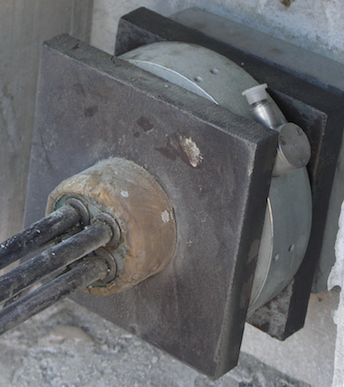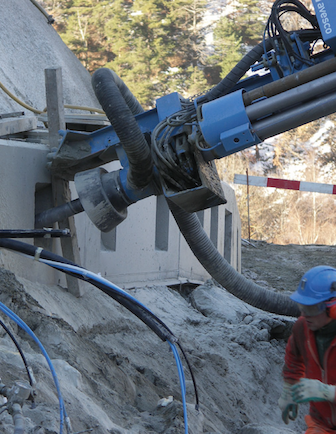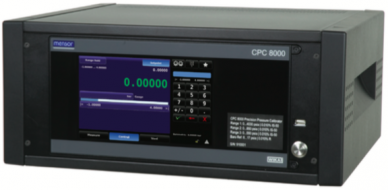
Of course, hydroelectric power plants need to keep an eye on flow, level, temperature, and pressure. But don’t forget about force, a key measurement as reservoirs are surrounded by rock and earth. There’s also the matter of instrument calibration, an essential aspect of plant safety and efficiency.

This force transducer by tecsis, a WIKA subsidiary, is placed between two adaptor plates to continuously record the clamping force. It immediately detects any changes in the pretension of the anchor.
Geotechnics: Don’t Underestimate the Force
Hydropower plants work with water, but the entire facility is surrounded by rock and earth – thus the importance of measuring geotechnic forces.
By withstanding longitudinal and transverse force, anchors are permanent or temporary constructional elements that stabilize the subsoil. Therefore, plants need to pay special attention to the metrological inspection and monitoring of the pretensioning force of anchors as load-bearing elements of a structure, especially in the case of permanent anchors.
What anchors do
Anchors secure foundations, protect slopes or ceilings in tunnels, and attach railing posts to the ground. The anchor is either inserted into the drilled reinforcement or flush with the surface and concreted, or it serves as a drill (self-drilling anchor). Anchor heads are affixed using wedge disks, anchor head plates (adaptor plates), and domed nuts.

Anchors and force transducer are used to support slopes, secure foundations, monitor concrete conditions, and much more.
Monitoring anchor force with force transducers
When placed between two adaptor plates, a force transducer continuously records the clamping force. By measuring that force, users obtain the data necessary to optimize safety and check planning calculations, such as when terrain is moved for structural or safety-related measures. If a change in the anchor’s pretension occurs, the transducer detects it immediately and sends an alert so appropriate action can be taken. For especially inaccessible terrain, use autonomous systems that do not require an external power supply.
What else force transducers are good for
When constructing a hydropower plant, a force transducer can do more than keep an eye on geotechnical conditions. It can also monitor concrete conditions during the building process.
Here’s how: The ring force transducer is prestressed on the reinforcing rod, against the shuttering. When concrete is poured, it exerts a high force on the shuttering. As concrete hardens, that force gradually subsides. This is an efficient, timesaving method of remotely monitoring the state of concrete.
Calibrating Instruments
With so many variables to monitor, instruments must be reliably accurate. WIKA makes several calibration systems for testing and servicing pressure components.
CPG1500 is a precision digital pressure gauge that comes with an integrated data logger. It is ideal for testing hydraulic systems and valves in power plants. Model CPG1500 combines the accuracy of digital measurement technology with the simplicity of an analog gauge.
CPC6050 is a modular mobile precision pressure controller. This multi-channel/multi-range pressure system has been designed to test and calibrate a variety of pressure devices. It features up to four temperature-compensated pressure transducers, an accuracy of 0.01% FS, and barometric reference.

The CPC8000 High-End Pressure Controller
CPC8000 is a high-end pressure controller designed to automate the testing and calibration of all types of pressure components. It features a large color LCD display and easy, intuitive navigation. Operating pressure ranges from 5 psi to 6,000 psi, and each of its three transducer modules is configured with its own calibration parameters.
WIKA is a one-stop resource for all the instrumentation needs of a modern hydropower plant. We back up our high-quality products with decades of experience in the power & transmission industry. What’s more, our customer service is second to none. Contact us for more information on how WIKA can help your hydroelectric plant operate more safely and efficiently.


It is great blog post. I am Always read your blog. Helpful and Informative blog. Thanks for sharing these information with us.